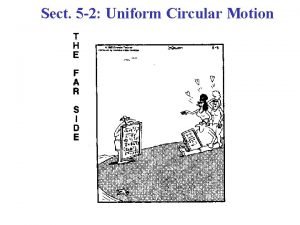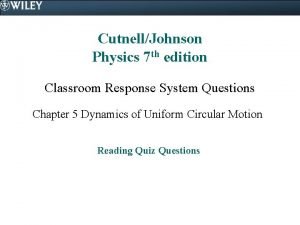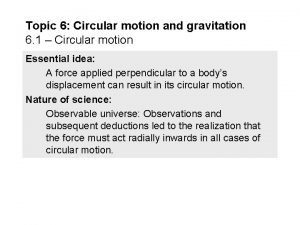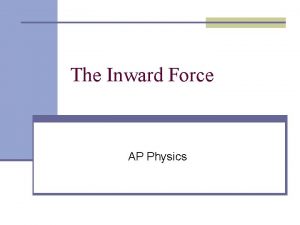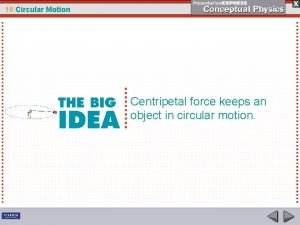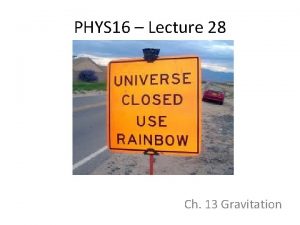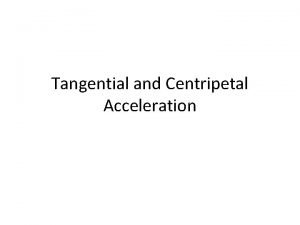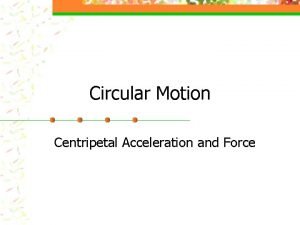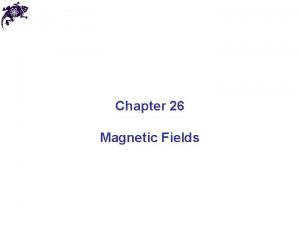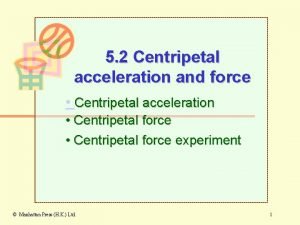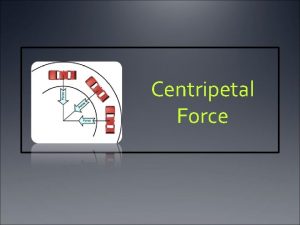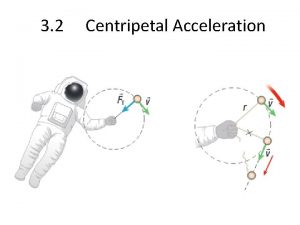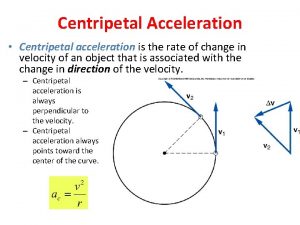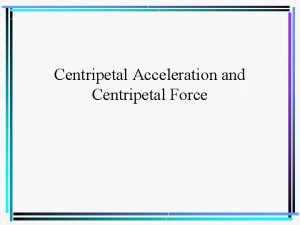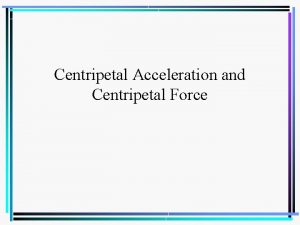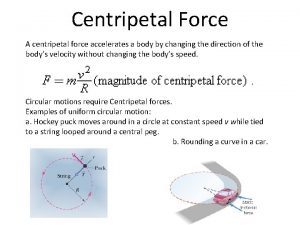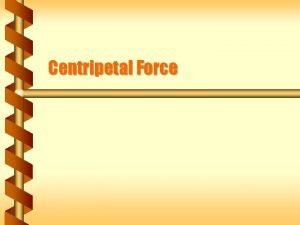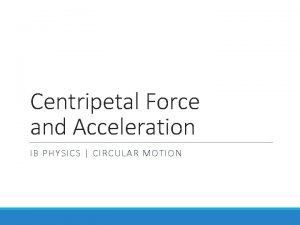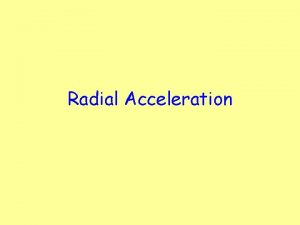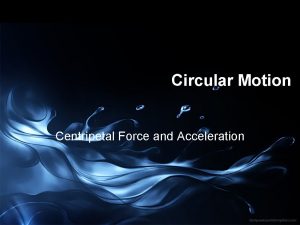The Inward Force AP Physics Centripetal Acceleration n
















- Slides: 16

The Inward Force AP Physics

Centripetal Acceleration n Centripetal force and centripetal acceleration are always directed toward the center of the circular motion.

Many Quantities n Velocity n Tangential (v) n Angular (ω) n Acceleration n Tangential (a) n Angular (α) n Centripetal (a ) c Linear and angular quantities are related by the radius of revolution.

Total Linear Acceleration? n Tangential and centripetal acceleration are both linear quantities. n Always 90° apart. n There is a total linear acceleration as well. n Found by adding the two (tangential and centripetal) linear accelerations vectors together.

Centripetal Force n Recall that according to Newton’s Second Law, the acceleration is directly proportional to the Force. If this is true: Since the acceleration and the force are directly related, the force must ALSO point towards the center. This is called CENTRIPETAL FORCE. NOTE: The centripetal force is a NET FORCE. It could be represented by one or more forces. Do not draw on FBD.

Centripetal Acceleration with angular quantities n Centripetal acceleration is always inward. n Must be in units of kg·m/s² to get a force in Newtons

Centripetal Force is required for Circular Motion n As a car makes a turn, the force of friction acting upon the turned wheels of the car provide the centripetal force. n As a bucket of water is tied to a string and spun in a circle, the force of tension acting upon the bucket provides the centripetal force. n As the moon orbits the Earth, the force of gravity acting upon the moon provides the centripetal force.

Vertical Circular Motion n At the top of the motion: n At the bottom of the motion:

Vertical Circle Practice n The maximum tension that a 0. 50 m string can tolerate is 14 N. A 0. 25 kg ball attached to this string is being whirled in a vertical circle. What is the maximum speed the ball can have: 1. 2. the top of the circle? at the bottom of the circle?

Answers n Top: n Bottom:


Friction and Centripetal Force Top view FN mg Side view Ff What is the minimum coefficient of static friction necessary to allow a penny to rotate along a 33 1/3 rpm record (diameter = 0. 300 m), when the penny is placed at the outer edge of the record?


Banked Curve n How is this possible?

Forces on a Banked Curve Perfect Banking Going too fast n If the curve is banked for n The car may begin to a perfect speed, there will be no slipping. n Normal component is inward. slide up the ramp. n Normal and friction components are inward. What about too slow?

Banked Incline n If a curve with a radius of 80 m is perfectly banked for a car traveling at 20 m/s, then what is the maximum safe speed for a car to not skid if the coefficient of static friction between the tires and the road is 0. 23. n First you must find the banking angle without friction. θ = 27° v = 25. 6 m/s
 Centripetal force
Centripetal force Circular motion with constant speed
Circular motion with constant speed Radial acceleration formula
Radial acceleration formula Centripetal acceleration tangential acceleration
Centripetal acceleration tangential acceleration Centripetal acceleration physics classroom
Centripetal acceleration physics classroom 6-1 centripetal acceleration and force
6-1 centripetal acceleration and force 6-1 centripetal acceleration and force
6-1 centripetal acceleration and force Ap physics centripetal force
Ap physics centripetal force Which arrow below represents the direction of acceleration
Which arrow below represents the direction of acceleration If you whirl a tin can on the end of a string
If you whirl a tin can on the end of a string Centripetal force vs centrifugal
Centripetal force vs centrifugal Centripetal force and gravitational force
Centripetal force and gravitational force Centripetal acceleration unit
Centripetal acceleration unit Tangential vs centripetal acceleration
Tangential vs centripetal acceleration Missy's favorite ride at the topsfield fair is the rotor
Missy's favorite ride at the topsfield fair is the rotor Centripetal acceleration magnetic field
Centripetal acceleration magnetic field Centripetal acceleration is a scalar quantity
Centripetal acceleration is a scalar quantity

